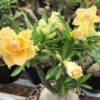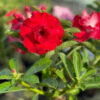**Orchids and Their Historical Uses in Traditional Medicine**

Orchids, with their enchanting beauty and delicate fragrance, have long captivated human imagination and inspired a rich tapestry of cultural traditions, including their use in traditional medicine. For centuries, orchids have been revered for their medicinal properties and healing properties, with numerous historical accounts documenting their role in ancient medical practices across different cultures. In this article, we explore the fascinating history of orchids in traditional medicine and the enduring legacy of their therapeutic uses.
**1. Ancient Chinese Medicine:**
In traditional Chinese medicine (TCM), orchids have been valued for their medicinal properties for thousands of years. Orchids, known as “lan” in Chinese, were believed to possess a variety of healing properties and were used to treat a wide range of ailments.
One of the most famous orchids in Chinese medicine is the dendrobium orchid (Dendrobium spp.), known as “Shi Hu” in Chinese. Dendrobium orchids were prized for their ability to nourish yin, clear heat, and promote fluid production in the body. They were traditionally used to treat conditions such as dry mouth, thirst, fever, and vision problems.
Orchids were also used in Chinese medicine to tonify the kidneys, replenish essence, and strengthen the body’s defenses against disease. Orchid bulbs and tubers were often included in herbal formulas designed to enhance vitality, promote longevity, and improve overall health and well-being.
**2. Ayurvedic Medicine:**
In Ayurvedic medicine, the traditional healing system of India, orchids have been revered for their therapeutic properties for millennia. Orchids, known as “Swayambhu Pushpa” or “Swarnakamalika” in Sanskrit, were valued for their ability to balance the body’s doshas and promote harmony and vitality.
In Ayurveda, orchids were used to treat a wide range of health conditions, including digestive disorders, respiratory ailments, skin problems, and nervous system imbalances. Orchid extracts and infusions were often prescribed to improve digestion, boost immunity, and enhance overall vitality.
Orchids were also prized in Ayurvedic medicine for their aphrodisiac properties and were used to enhance fertility, libido, and sexual performance. Orchid flowers and roots were included in herbal formulations designed to stimulate desire, increase stamina, and promote reproductive health.
**3. Traditional Indigenous Medicine:**
Indigenous cultures around the world have also used orchids for medicinal purposes, incorporating these plants into their healing traditions for generations. In South America, for example, indigenous tribes have used orchid roots and tubers to treat a variety of ailments, including fevers, infections, and digestive problems.
In Africa, orchids have been used in traditional medicine to treat conditions such as malaria, diarrhea, and skin infections. Orchid extracts were often applied topically or ingested as teas or infusions to promote healing and alleviate symptoms.
In Southeast Asia, orchids have been valued for their cooling properties and were used to treat conditions such as heatstroke, dehydration, and inflammation. Orchid flowers and roots were often brewed into teas or decoctions and consumed as a refreshing tonic to relieve discomfort and promote recovery.
**4. Modern Research and Applications:**
While orchids have a long history of use in traditional medicine, modern scientific research has begun to validate some of their traditional uses and explore their potential therapeutic benefits. Studies have shown that certain compounds found in orchids possess antioxidant, anti-inflammatory, and immunomodulatory properties, making them promising candidates for the development of new pharmaceuticals and nutraceuticals.
Orchid extracts and compounds have been studied for their potential applications in the treatment of cancer, cardiovascular disease, neurodegenerative disorders, and other chronic conditions. Researchers are also investigating the use of orchid-derived compounds in skincare products, dietary supplements, and herbal remedies for various health conditions.
While more research is needed to fully understand the therapeutic potential of orchids, their historical uses in traditional medicine provide valuable insights into their medicinal properties and cultural significance. As interest in natural remedies and holistic healing continues to grow, orchids may once again take center stage as valuable allies in promoting health, vitality, and well-being.

